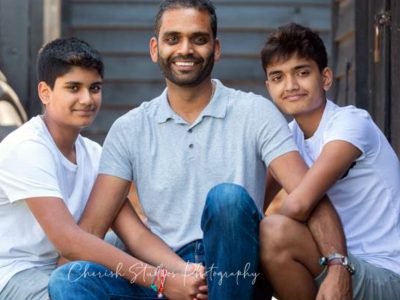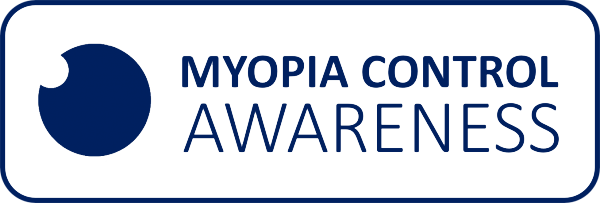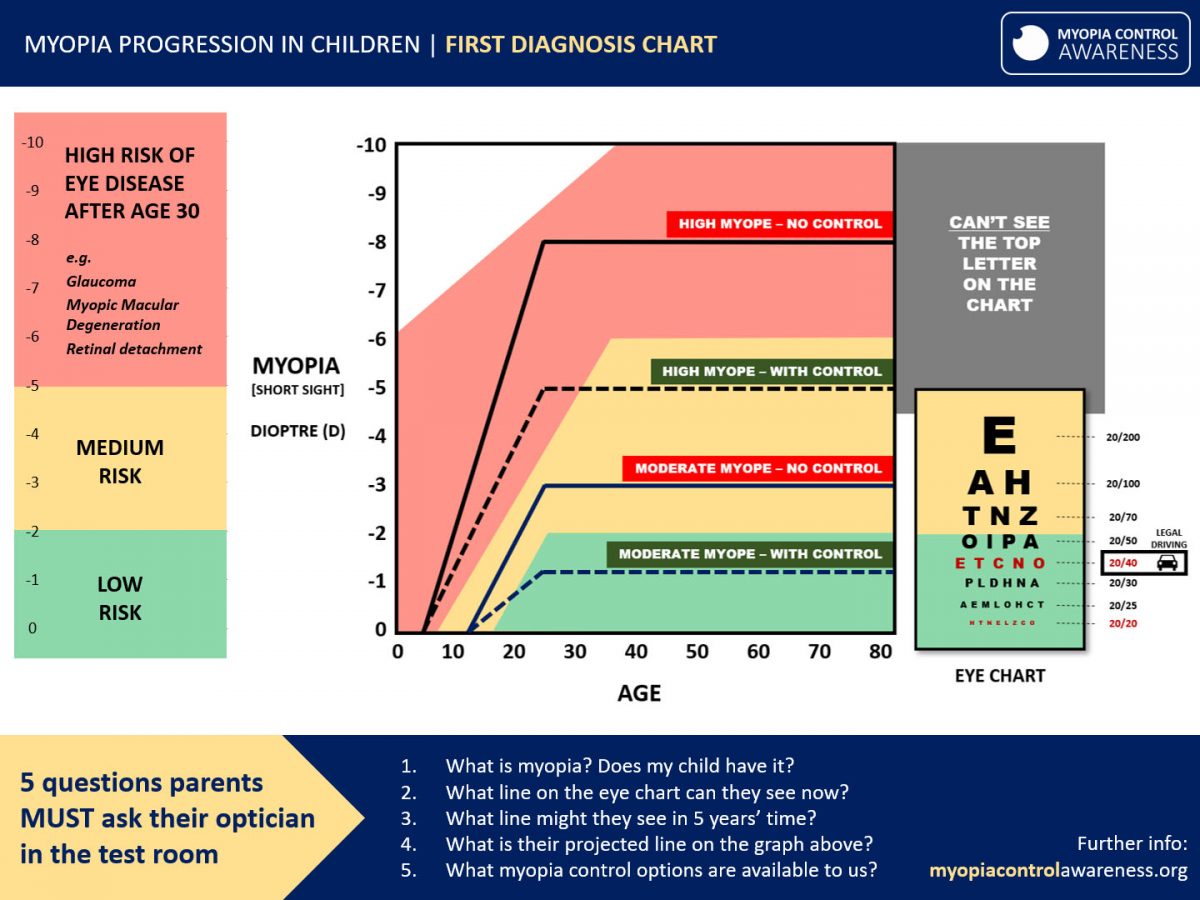Myopia Control
Myopia, which is informally referred to as “short sight,” is a condition that, unfortunately, often flies under the radar. What many people don’t realize is that it increases the risk of serious sight-related problems such as retinal detachments and diseases like glaucoma and myopic macular degeneration. It’s crucial to take these issues seriously because the severity of Myopia directly correlates with the risk of these diseases.
Myopia causes the eye to grow longer, making the retina more susceptible to degeneration. To put it simply, if we think of the eye as a camera, the retina serves as the film that captures our vision. Damage to the retina can result in vision loss that cannot be corrected with glasses or surgery. In the worst-case scenario, it can even lead to partial sight or blindness.
But here’s the silver lining: we now have the means to reduce the progression of Myopia in children. The chart below illustrates the importance of taking action early to help your child enjoy better vision throughout their life and lower their risk of eye diseases as they grow older.
TRAFFIC LIGHTS & YOUR CHILD (on the chart above)
RED – High myopia: It’s crucial to take early control measures.
AMBER – Moderate myopia: Aim for the green zone; it’s achievable.
GREEN – This is the target we’re striving for.
AN ‘EYE TEST’ ASSESSES THE HEALTH OF THE EYE
Now, when it comes to an “eye test,” it’s not just about checking if they need glasses. It’s a checkup for their eye health. Considering that our children are expected to live well into their 90s, their eyes have to last them a long time! The RED ZONE indicates poorer eye health, which could lead to struggles like difficulty seeing the top line on the chart without correction, potential issues with driving, and a higher risk of eye diseases as they age. Taking proactive steps now to keep them in the GREEN or AMBER zones will set them up for a brighter future. Remember, every Dioptre (measurement of refractive error) counts. Lower myopia today means better eyesight down the road.
MYOPIA CONTROL | STARTING EARLY VS STARTING LATE
Starting Night Lenses early (age 9) was the best thing I ever did for my sons

As a dad, taking early steps to ensure my boys have good vision and reducing their risk of future eye problems has been the best decision I’ve made. As a clinician, being able to provide myopia control for young ones is undeniably one of the most fulfilling aspects of my work.”
JAIMIN PATEL, OPTOMETRIST (& DAD)
Tom’s son, whom Tom is seen teaching to surf below, initially found himself in the RED ZONE. However, with the use of night lenses starting at the age of 13, his myopia progression has stabilized, and he’s now making his way toward the AMBER ZONE. While he might not reach the GREEN ZONE, the early intervention has significantly reduced his risk.
Without this timely action, he would have faced a 40% higher chance of developing eye diseases like Glaucoma and Myopic Macular Degeneration later in life compared to Jaimin’s son mentioned earlier.



“”Benjamin has short sight”
That’s what the optometrist told us. My wife and I didn’t think much of it. Short sight can’t be that big of a deal, right? Benjamin was just 8 years old. But between ages 9 and 13, his vision plummeted to -3.75 and -4.00. Without his glasses, he was virtually blind. He was an avid surfer, but he couldn’t even see the waves anymore. He stopped playing sports and lost his confidence. It was heart-wrenching.
It wasn’t until later that we learned “short sight” was just a casual way of saying he had myopia, a medical condition. To our shock, we discovered that the worse his myopia got, the higher his risk of serious eye diseases later in life became. Why hadn’t anyone told us this sooner?
At 14, he was fitted with a myopia control device. Now, at 16, he’s been stable for 2 years, moving from the RED zone into the AMBER (as shown by the upper dotted line). He’s a happy, confident surfer, and the transformation has been nothing short of incredible!
I deeply regret not starting sooner to give him better vision and a brighter future. Jaimin’s son (mentioned earlier) had a similar experience to Benjamin but began at age 9, whereas Benjamin started 5 years later at 14. When they’re older, Jaimin’s boy will likely see the 4th or 5th line down on the eye chart without any help, almost reaching the legal driving limit, and he’ll have a low risk of eye disease. Benjamin will only be able to see the top line and will have a moderate risk of eye disease. That’s the difference that starting 5 years too late makes for his long-term vision.
However, I’m thankful we started when we did, or else Benjamin might not have been able to see the eye chart at all as he got older, probably needing laser eye surgery and facing a very high risk of eye disease.
To all the parents reading this, please take this advice seriously and start myopia control early!
TOM GRIFFITHS, DAD

If you want to delve deeper into understanding Myopia in kids, the progression of Myopia, and how to control it, check out myopiacontrolawareness.org. This website isn’t driven by commercial interests; it’s a collaborative effort from the industry aimed at making sure parents know what questions to ask their optometrists and get the answers they need. It’s all about giving your children the best vision possible and setting them up for a brighter future.

